The Importance of Spaying and Neutering in Cat Adoption
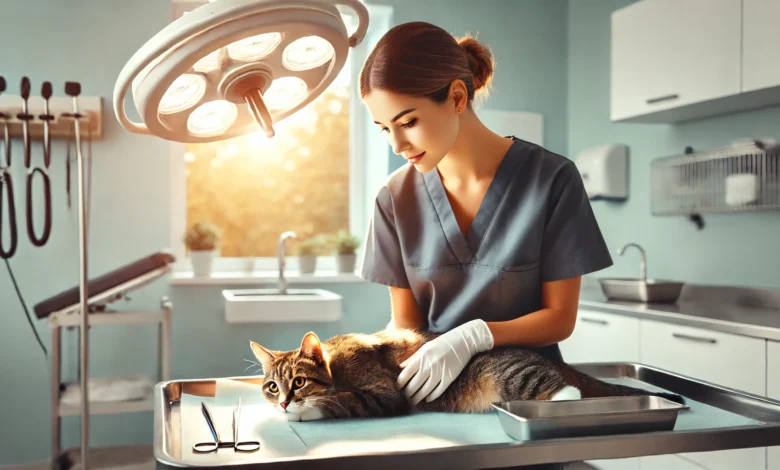
Adopting a cat is an incredibly rewarding experience, but with it come responsibilities that help in the well-being of your new furry companion.
One of the most important decisions you’ll make as a cat owner is whether to have your pet spayed or neutered.
This important step not only helps your cat’s health but also plays a very important role in reducing overpopulation in the feline community.
Understanding the importance of spaying and neutering during cat adoption will help improve not only your pet’s life but also that of countless others.
Spaying and neutering are medical procedures applied to take away a cat’s ability to reproduce.
Beyond this simplified explanation, these surgeries hold several health, behavioral, and social benefits that are often overlooked.
In this article, we are going to explore why spaying and neutering your cat is essential, especially for adopted cats, and how these procedures make a significant difference in the population of cats.
By the time you reach the end of this article, you will have the information you need to make an informed decision for your new feline friend.
Table of Contents
What Is Spaying and Neutering?
Spaying and neutering are surgical operations that prevent cats from reproducing.
Spaying involves removing the ovaries and uterus of a female cat, while neutering, in male cats, refers to the removal of the testicles.
These surgeries are performed by veterinarians and are safe for most cats when done at the appropriate age.
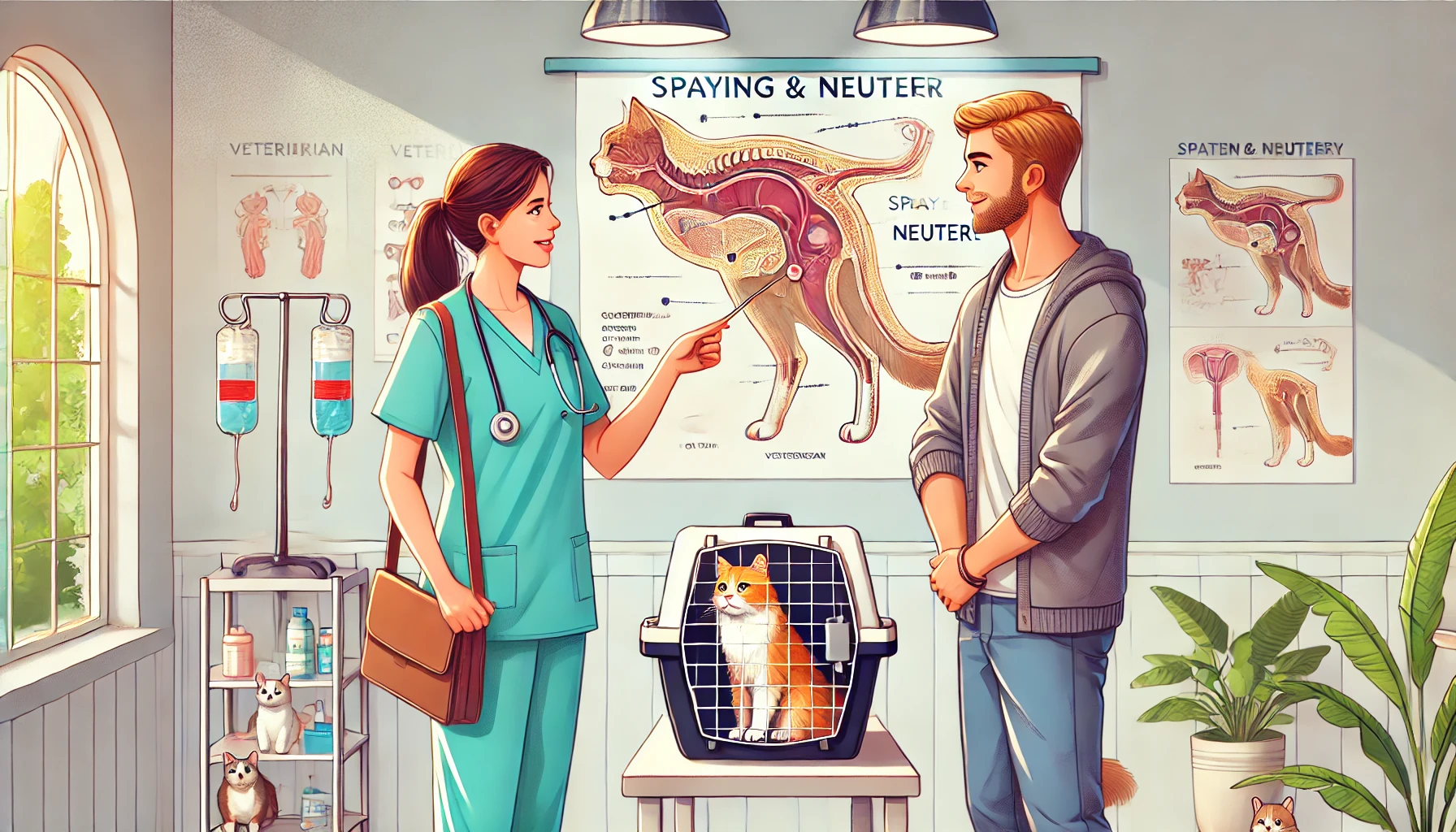
Spaying and Neutering: Defined
The term ‘spaying’ refers specifically to females, involving an ovariohysterectomy, where both ovaries and sometimes the uterus are removed.
This prevents the female cat from becoming pregnant.
On the other hand, ‘neutering’ generally applies to males and refers to an orchiectomy, which is the removal of the testicles.
Neutering renders males unable to reproduce.
While the procedures differ depending on the cat’s gender, both spaying and neutering serve the same purpose: controlling the cat population and providing significant health benefits for your cat.
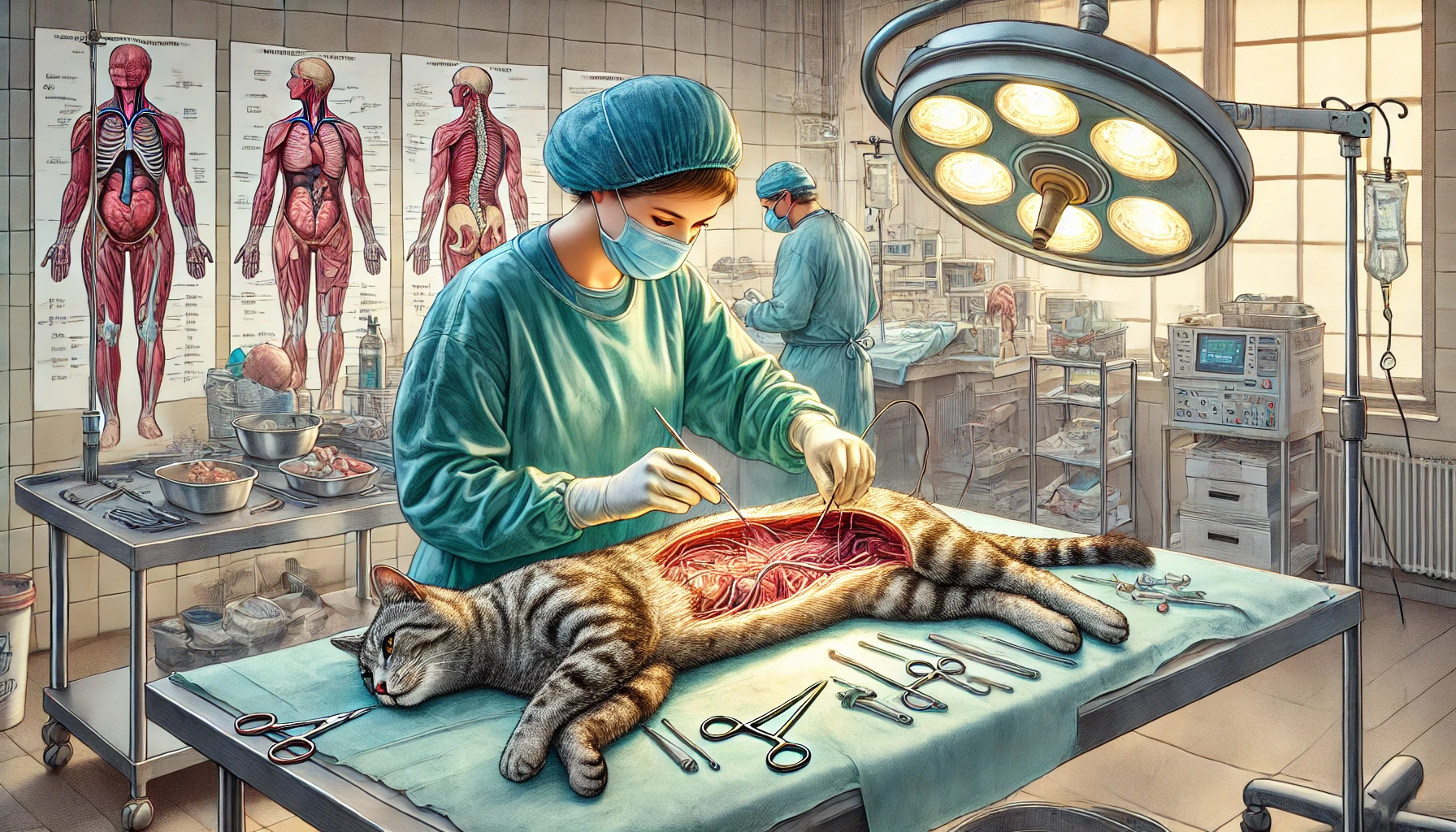
How It Works: The Procedures Explained
Spaying and neutering are simple surgeries.
In female cats, the veterinarian makes a small incision in the abdomen to remove the ovaries and uterus.
For males, the testicles are removed through a smaller incision near the scrotum.
Both procedures are done under general anesthesia, meaning the cat is asleep and feels no pain during the surgery.
Cats typically recover within a few days to a week after surgery.
Your veterinarian will provide advice on how to care for your cat during this time, such as limiting activity and preventing your cat from licking or biting at the surgery site.
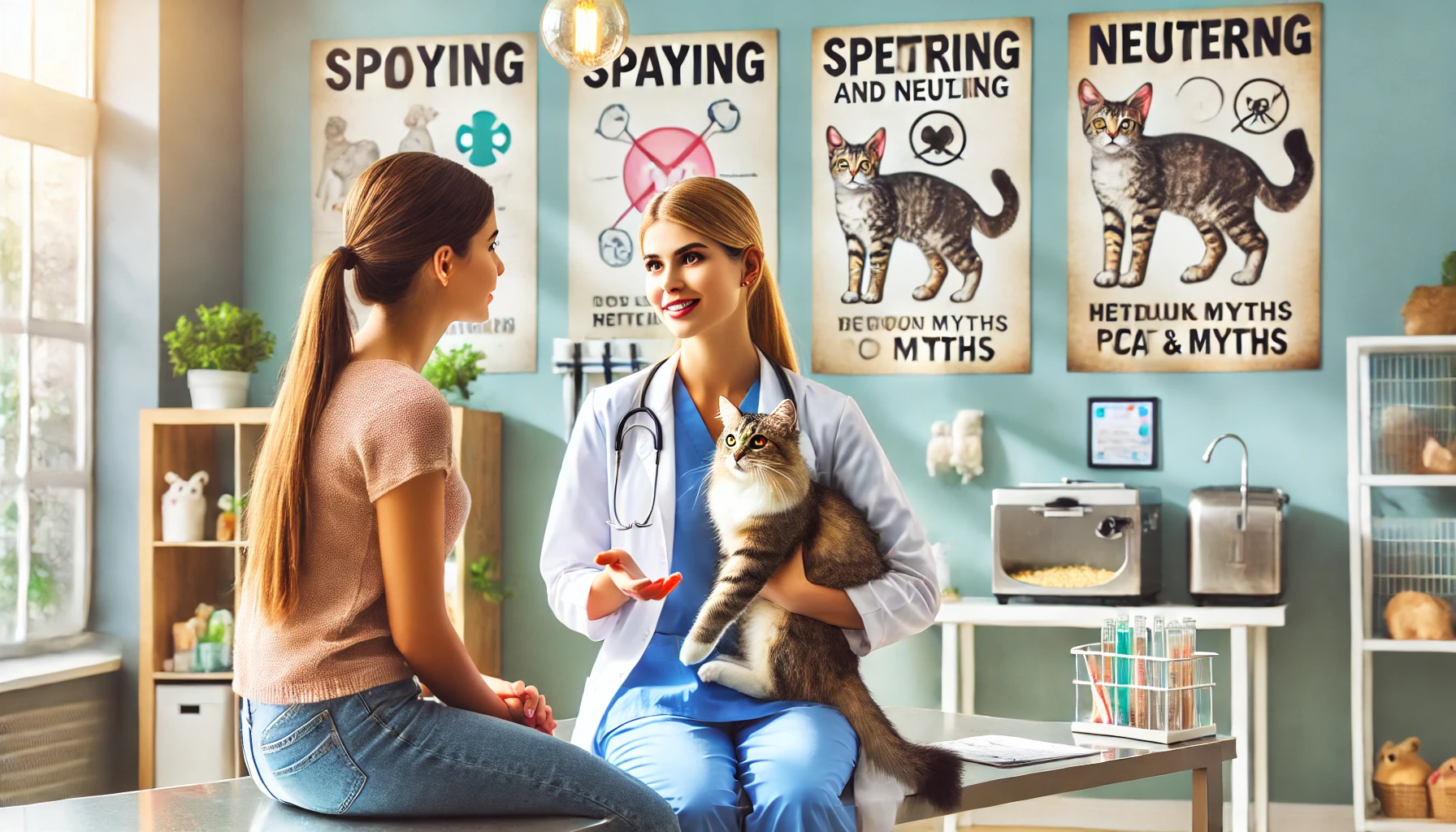
Common Misconceptions About Spaying and Neutering
Several misconceptions about spaying and neutering may discourage some people from considering these procedures for their cats.
For example, some believe that a neutered male cat will lose its personality or become overweight.
However, neutering does not change a cat’s personality, and weight gain can be managed with proper diet and exercise.
Another common myth is that female cats should have at least one litter before being spayed.
This is unnecessary and, in fact, spaying cats before their first heat cycle significantly reduces the risk of developing certain cancers.
It is essential to dispel these myths and understand the true benefits of spaying and neutering, not only for your cat’s health but for the well-being of the broader feline community.
Spaying and neutering are important medical procedures that prevent cats from reproducing. They are safe when performed by a veterinarian at the right age and have several health and behavioral benefits.

Why Spaying and Neutering Are So Important in Cat Adoption
One of the very first things to consider when adopting a cat is how important it is to spay or neuter your new feline friend.
These procedures are crucial for your cat’s health but also play a very important role in the greater community of cat adoption and rescue.
There are countless stray and abandoned cats around the world, but spaying and neutering have significantly reduced unwanted litters, preventing overpopulation in the first place.
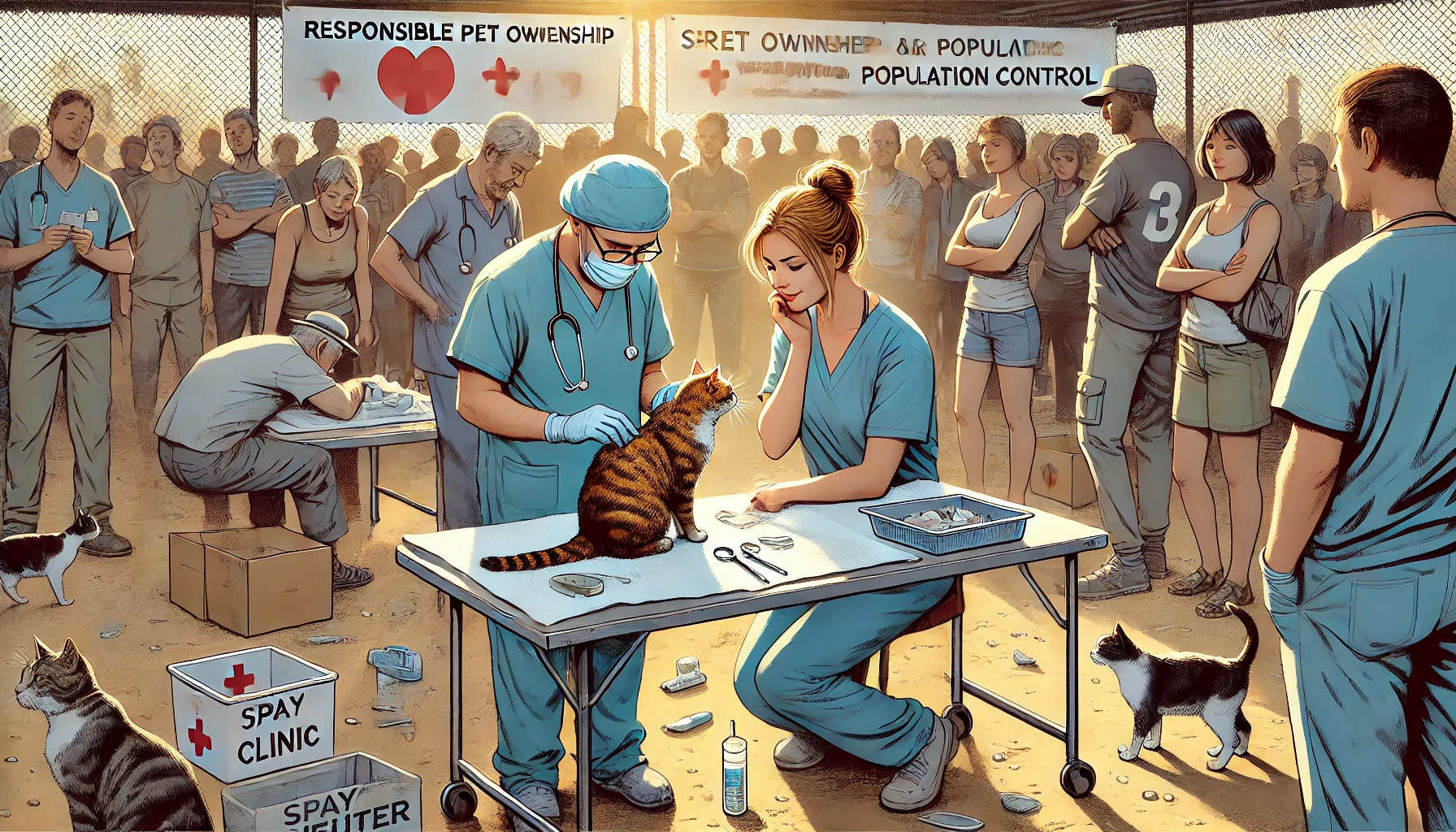
Population Control: Spaying and Neutering of Stray Cats
Population control is one of the major benefits of spaying and neutering.
Lack of responsible breeding causes an extraordinary number of kittens to be born without homes, and many end up in shelters or on the streets.
This leads to overcrowded shelters, increased euthanasia, and a higher number of stray animals.
Spaying and neutering prevent unwanted litters, allowing rescues to allocate their resources to re-homing the cats that are already in need.
Recent statistics from animal welfare organizations show that the population of stray cats is decreasing in areas where programs advocating spaying and neutering are actively promoted.
When you adopt a cat and have it spayed or neutered, you are contributing to the solution of overpopulation and helping to reduce the number of homeless animals on the streets.

Health Benefits for Spayed and Neutered Cats
Spaying and neutering not only help society but also offer significant health benefits for your cat.
Cats that are spayed or neutered tend to live longer, healthier lives.
In females, spaying can reduce the risk of uterine infections, which can be fatal, and also lowers the likelihood of breast cancer.
In males, neutering eliminates the risk of testicular cancer and decreases the chance of prostate issues.
- Reduced risk of uterine infections and breast cancer in females.
- Lower chance of testicular cancer in males.
- Prevention of behavioral problems related to mating instincts.
These health benefits mean fewer vet visits and lower healthcare costs throughout your cat’s life, which is another reason why spaying and neutering are essential.

Improvement in Behavior After the Surgery
Another benefit of spaying and neutering is the improvement in your cat’s behavior.
Unspayed females go into heat several times a year, which can lead to restless and aggressive behavior.
They may yowl loudly, attempt to escape the house, and urinate more frequently.
Neutered males are less likely to roam, fight with other cats, or spray urine to mark their territory.
These behavioral changes can make home life much more peaceful.
Spaying or neutering enhances the quality of your adopted cat’s life and makes them easier to manage as a pet.
This helps them adjust more easily to your household and allows you to bond more effectively with your new companion.
Spaying or neutering your adopted cat is crucial for its health and the greater goal of controlling the stray cat population.
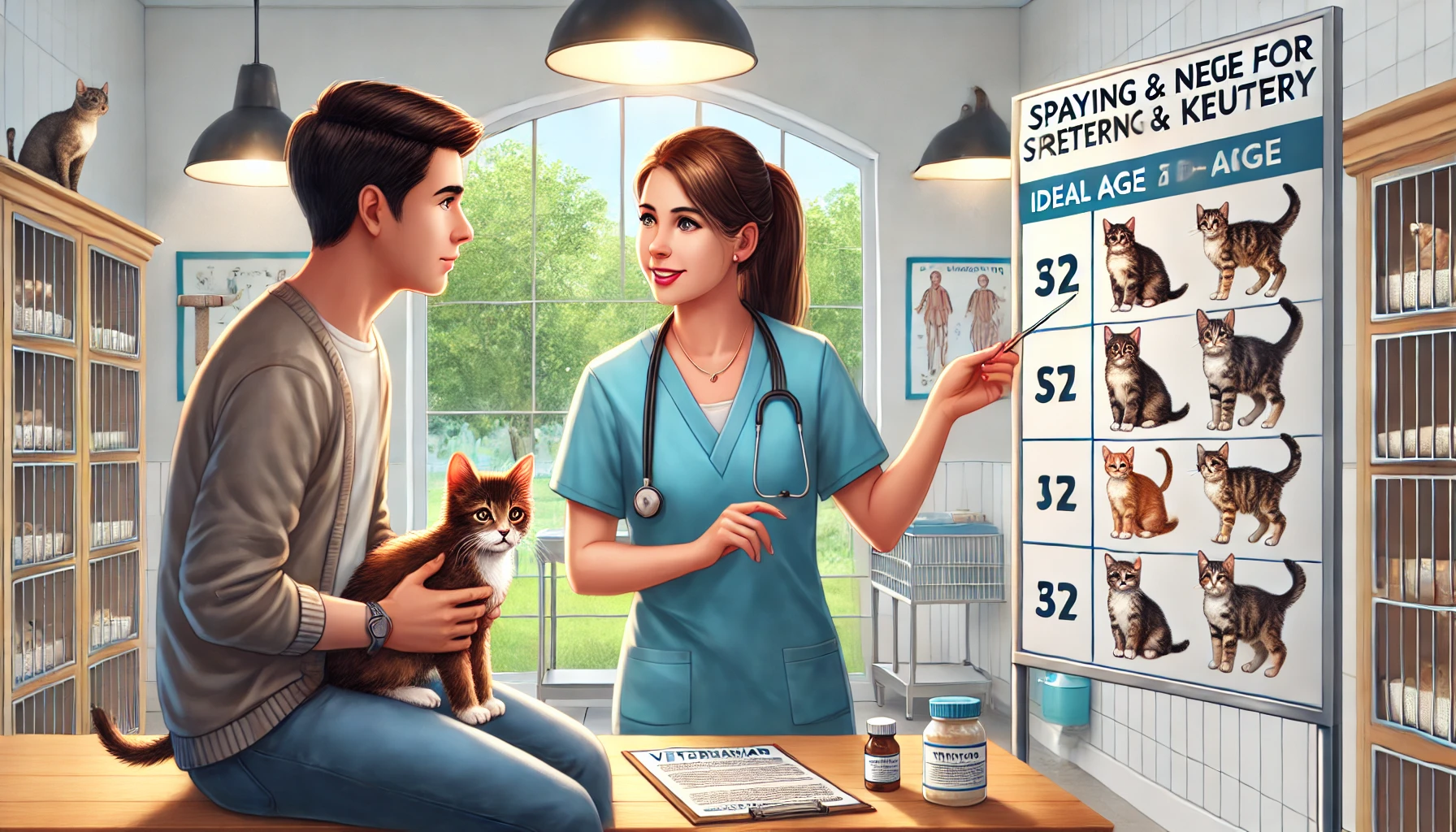
When to Spay or Neuter: All About the Right Time and Age
Knowing the right age to spay or neuter your cat is just as important as the decision to get it done.
While veterinarians typically recommend these procedures, the timing often varies due to factors such as breed, health, and living conditions.
Proper timing allows your cat to receive the full health benefits while minimizing risks.
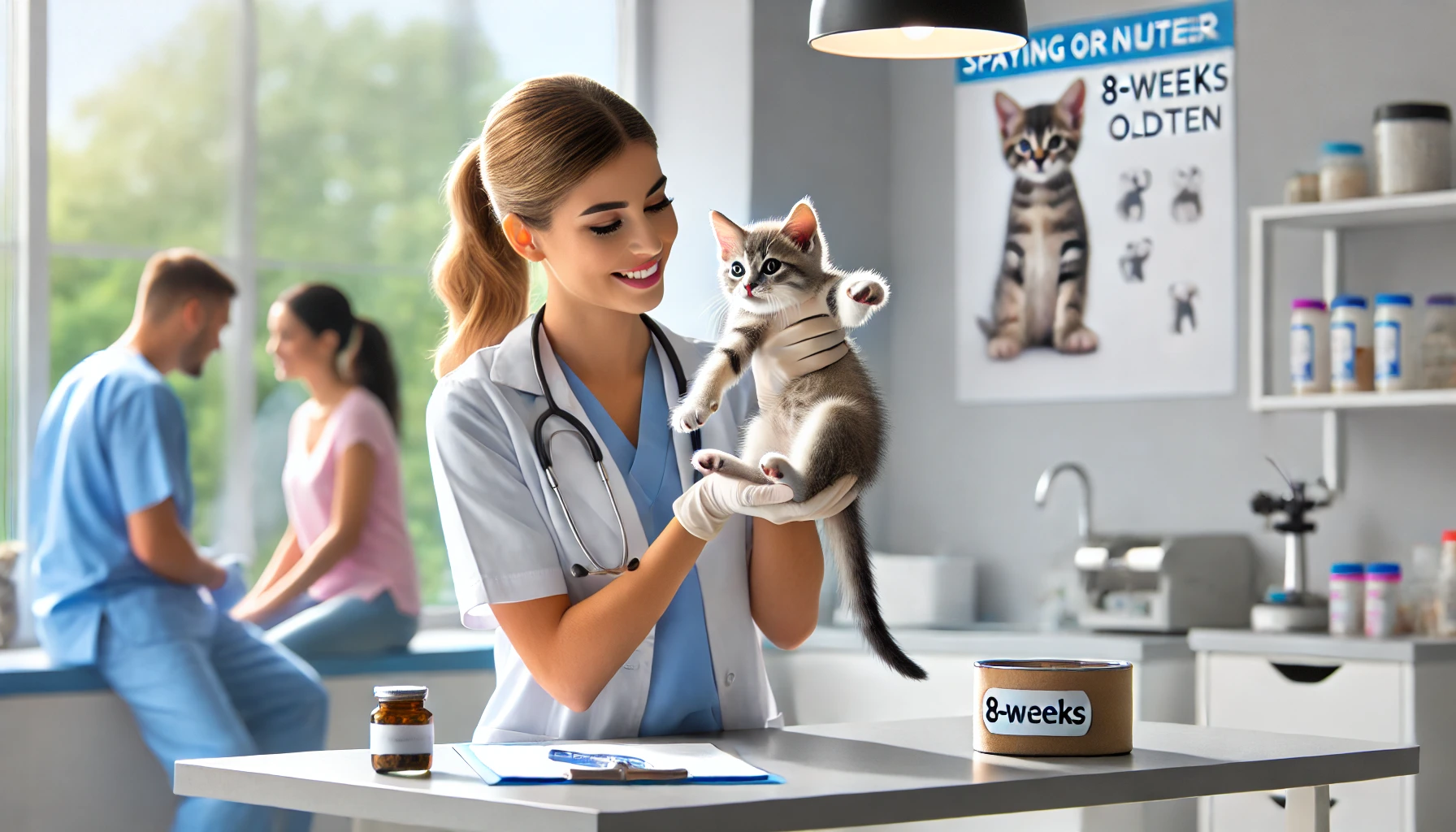
The Ideal Age for Spaying and Neutering
Most veterinarians now recommend spaying or neutering kittens as young as 8 weeks old, although the traditional timeframe remains between 4 to 6 months of age.
This helps ensure that the cat doesn’t reach sexual maturity, a time when unwanted behaviors such as spraying, marking, or yowling during heat may begin.
Early-age spaying and neutering, also known as pediatric spay/neuter, is considered safe and effective.
Many shelters spay or neuter kittens before they are placed in new homes.
However, for larger breeds, some veterinarians suggest waiting until the cat is closer to 6 months to a year.
Larger breeds take longer to mature, and this delay may support their overall development.
The best way to determine the ideal timing for your cat’s procedure is by consulting with your veterinarian, who will take into account the specific health needs and breed of your cat.
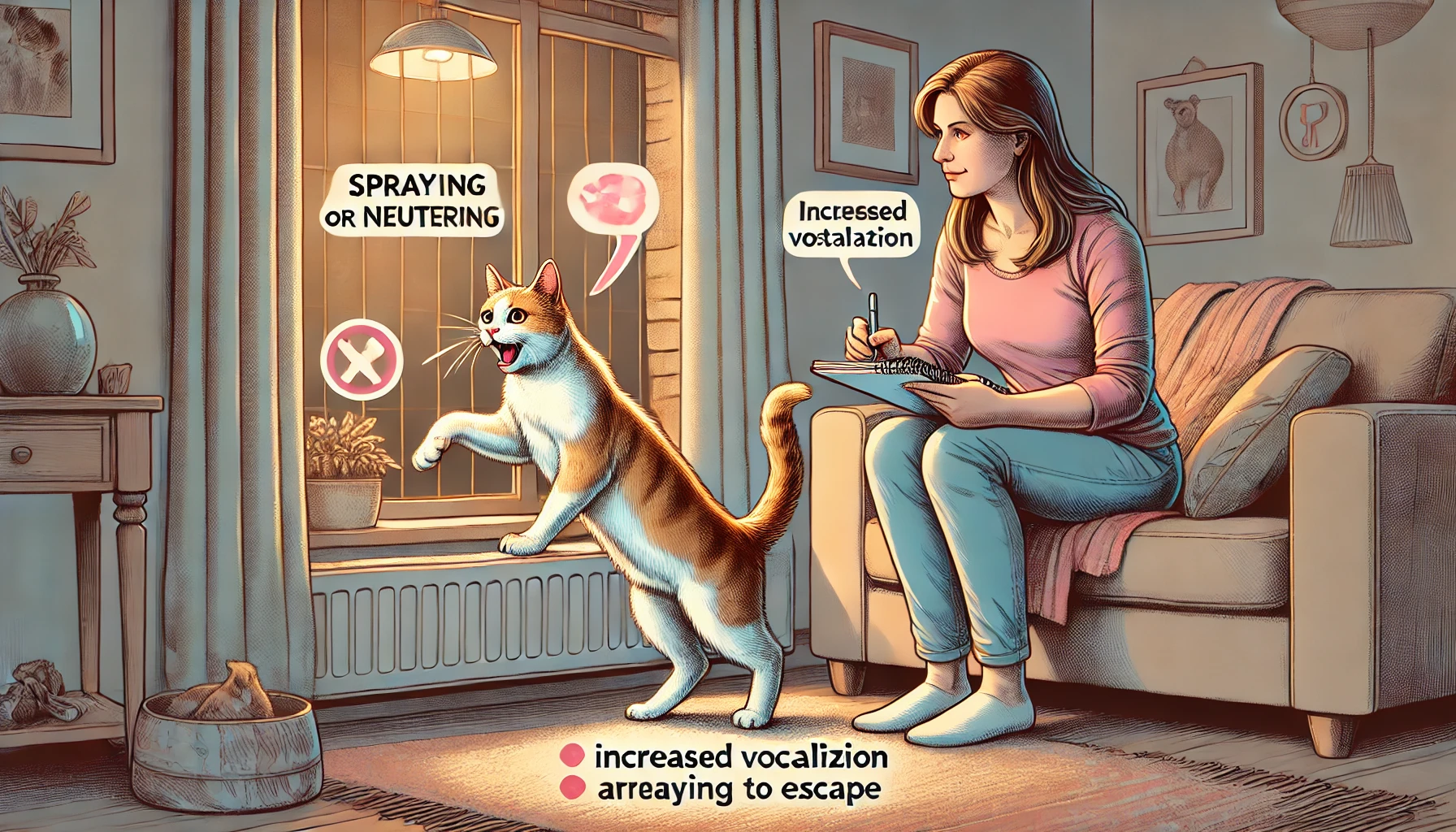
Signs Your Cat Is Ready for the Procedure
It is very important to spay or neuter your cat before they reach sexual maturity, which usually occurs around 5 to 6 months of age.
Here are some signs that your cat may be approaching sexual maturity and needs to be spayed or neutered soon:
- Increased vocalization, especially in females going into heat.
- Marking behavior, such as males spraying urine.
- Increased aggression or territorial behavior.
- Attempts to escape outdoors in search of a mate.
If your cat is showing these behaviors, it is important to visit your veterinarian and schedule a spay or neuter appointment as soon as possible.

Consult with Your Veterinarian for the Optimal Time
It’s always best to consult with your veterinarian before deciding when to spay or neuter your cat.
Your vet can assess your cat’s health, breed, and maturity to make an informed recommendation.
Many cats adopted from shelters have already been spayed or neutered, but if not, your vet can help you determine the best timing.
Factors such as the cat’s size, breed, and any medical background can affect the timing.
For example, some veterinarians may advise waiting longer in cases of specific breeds or when there are health conditions that need to be stabilized before surgery.
Ensuring your cat is in good health and discussing the timing with your veterinarian is essential before scheduling the procedure.
The timing of spaying or neutering depends on factors like breed and health. Early-age procedures are safe and beneficial in preventing unwanted behaviors.
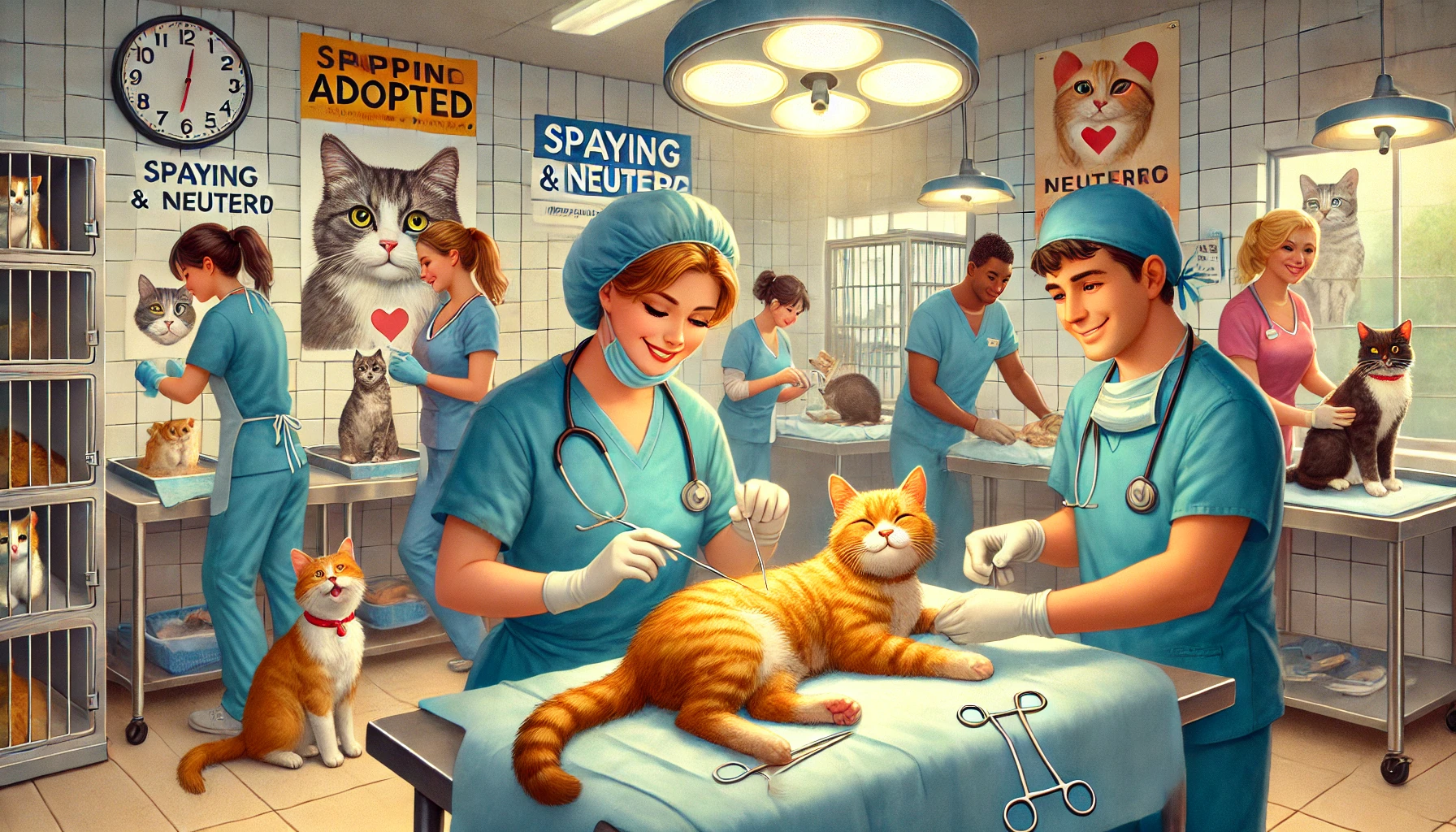
The Role of Spaying and Neutering in Rescue Shelters
Rescue shelters are key players in controlling stray and abandoned cat populations.
Among the tools shelters employ for this purpose is spaying and neutering cats before they are adopted.
This ensures that the adopted cats do not contribute to the overpopulation problem, which is one of the main reasons so many cats enter shelters in the first place.
Spaying and neutering have become standard practices in most reputable shelters and are essential for managing the population of cats in their care.
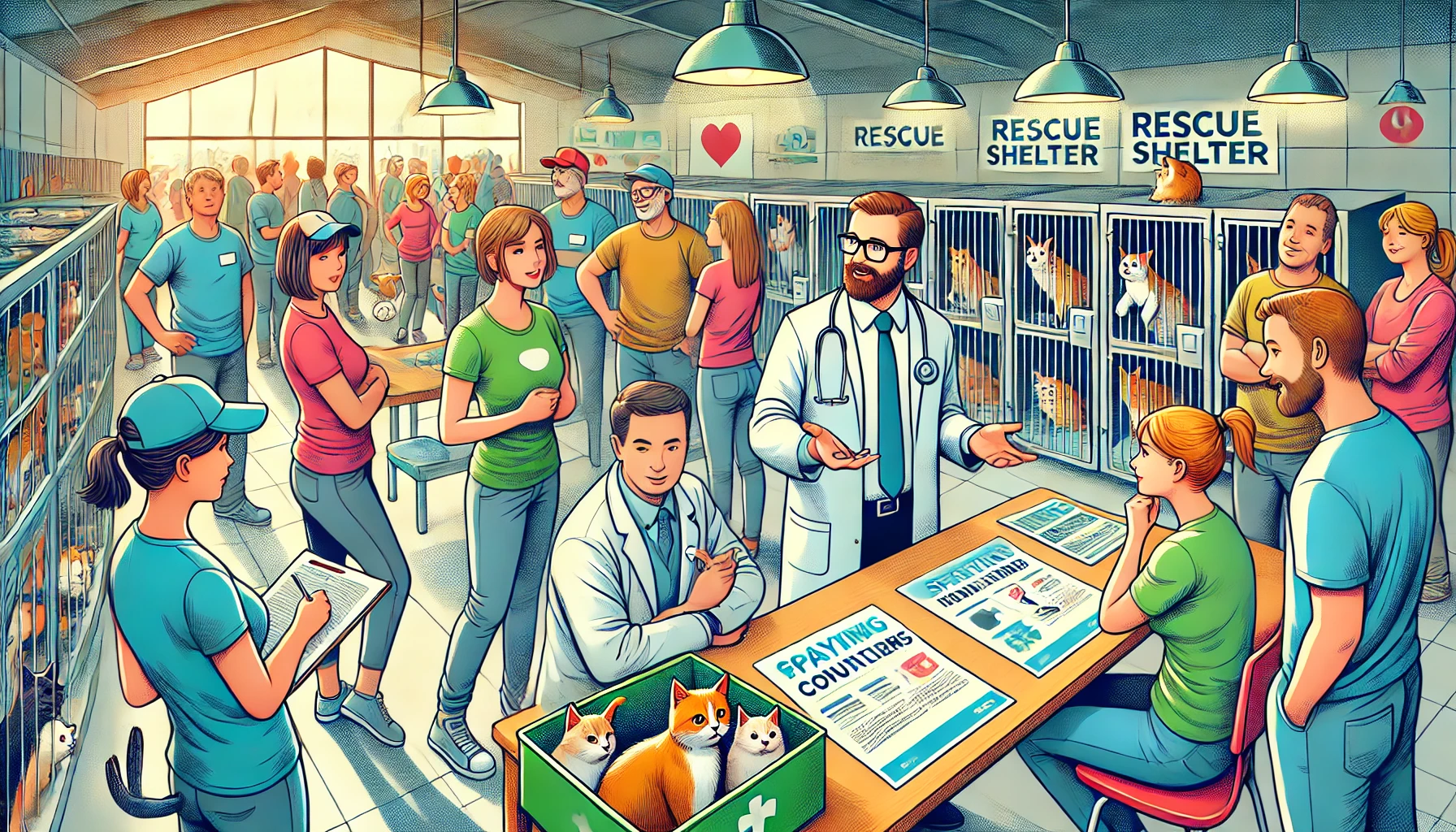
How Rescue Shelters Manage Population Control
Spaying and neutering are crucial components of a shelter’s population control strategy.
Because most shelters ensure every cat leaving their facility is spayed or neutered, thousands of kittens that would otherwise be born and eventually end up in the shelter system are prevented.
Shelters often work with local veterinarians or have in-house clinics to perform these procedures before adoption.
In many regions, these practices are mandated by law.
This strategy also allows shelters to focus more resources on the care of cats already in their system, reducing the number of strays.
With fewer new litters being born, shelters can concentrate on improving health care, socialization, and rehoming adult cats, resulting in a higher success rate for adoptions.
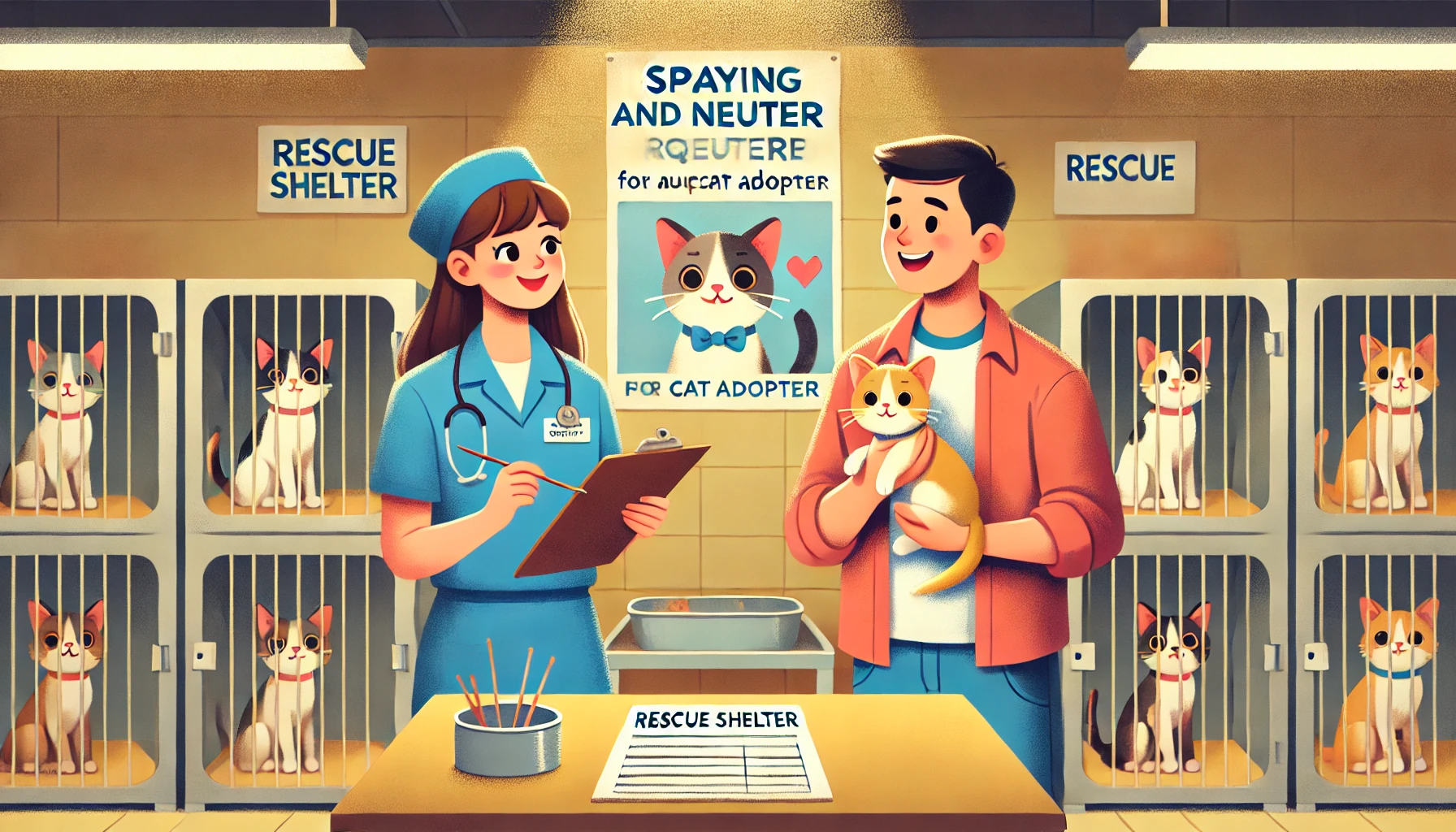
Spaying and Neutering Requirements for Adopted Cats
Most shelters require that every cat, regardless of age, be spayed or neutered before adoption.
In many cases, this procedure is performed when kittens are as young as 8 to 12 weeks old.
This ensures that the new owner does not need to worry about scheduling the surgery later and helps prevent accidental litters.
Some shelters offer financial assistance or discounted rates for the spay/neuter procedure, making it more accessible to adopters.
These programs encourage responsible pet ownership and help ease the burden of unwanted litters on the shelter system.
In some areas, adopters may be required to sign an agreement to have their new pet spayed or neutered within a specific timeframe if the procedure has not yet been completed.

Shelter Success Stories: Cats Adopted After the Procedure
Many shelters have heartwarming success stories of cats that were spayed or neutered, rehabilitated, and eventually found loving homes.
These stories highlight the positive impact spaying and neutering have, not only on population control but also on individual cats’ lives.
For example, spayed or neutered cats often exhibit improved behavior, which increases their chances of being adopted.
These cats go on to live healthy, happy lives with their new families, and many adopters report that spaying or neutering their pets helped them form stronger bonds with their cats.
By adopting from shelters that practice spaying and neutering, you are helping to reduce the stray cat population and giving a cat a second chance at life.
Spaying and neutering are essential for controlling cat overpopulation in rescue shelters. They ensure adopted cats don’t contribute to the problem.

Care After Surgery for Spayed or Neutered Cats
Immediately after surgery, proper post-surgery care is essential for your cat to recover from being spayed or neutered.
While this is a common and generally safe procedure, your cat will require some time to heal and regain their energy.
Knowing what steps to take during this period will help avoid complications and make your cat’s recovery as comfortable as possible.
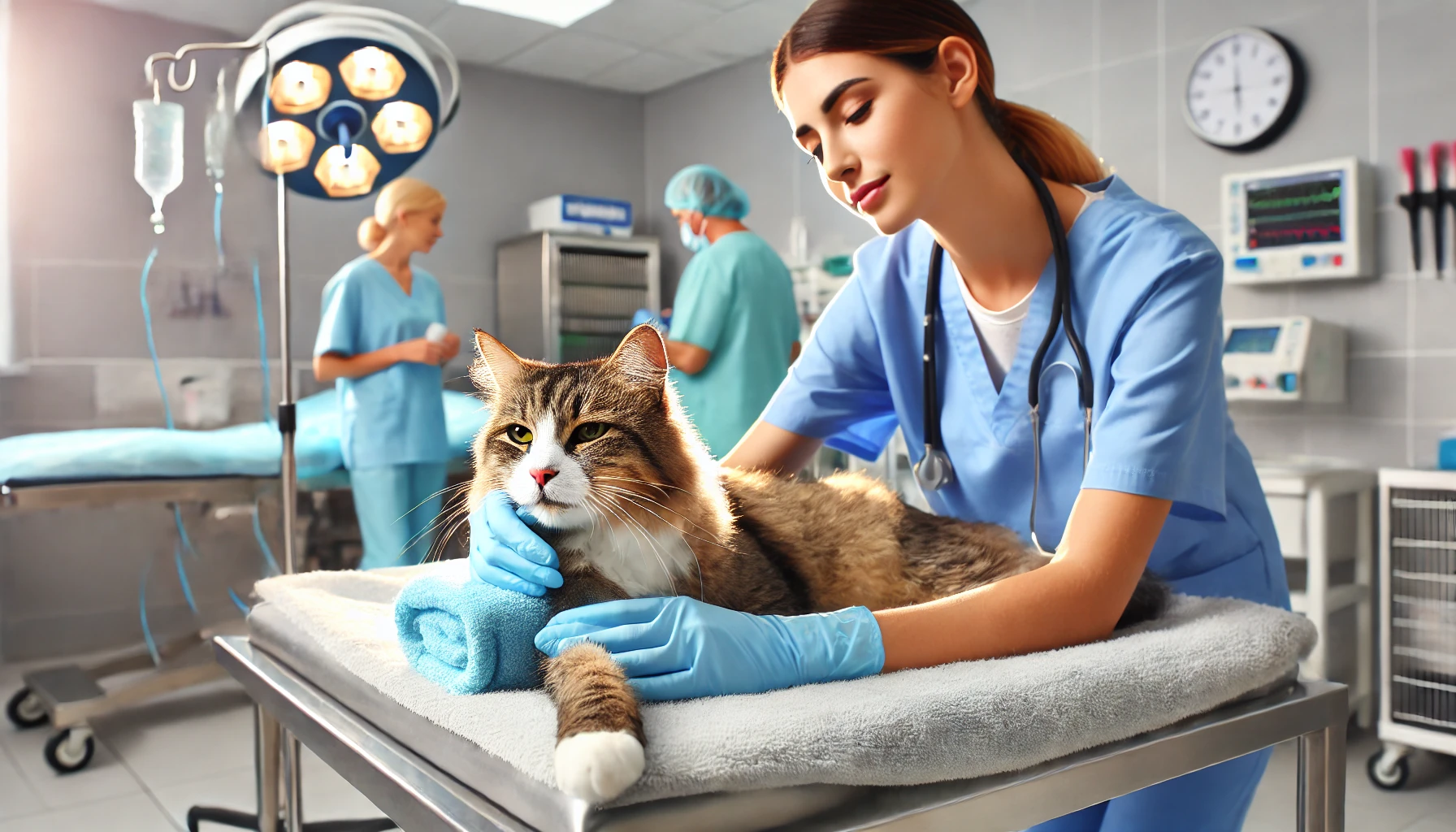
What to Expect Immediately After Surgery
After surgery, your cat may be groggy or disoriented from the anesthesia.
This is completely normal, and most cats will fully recover from the anesthesia within a few hours.
During this time, it’s important to keep your cat in a quiet, comfortable space where they can rest undisturbed.
Over the next 24 to 48 hours, monitor your cat for the following:
- Temporary lethargy or sleepiness
- Reduced appetite (should return to normal within a day)
- Slight swelling around the incision site
- Occasional whining or restlessness
If any of these symptoms seem extreme or persist for more than a couple of days, contact your veterinarian to rule out complications.
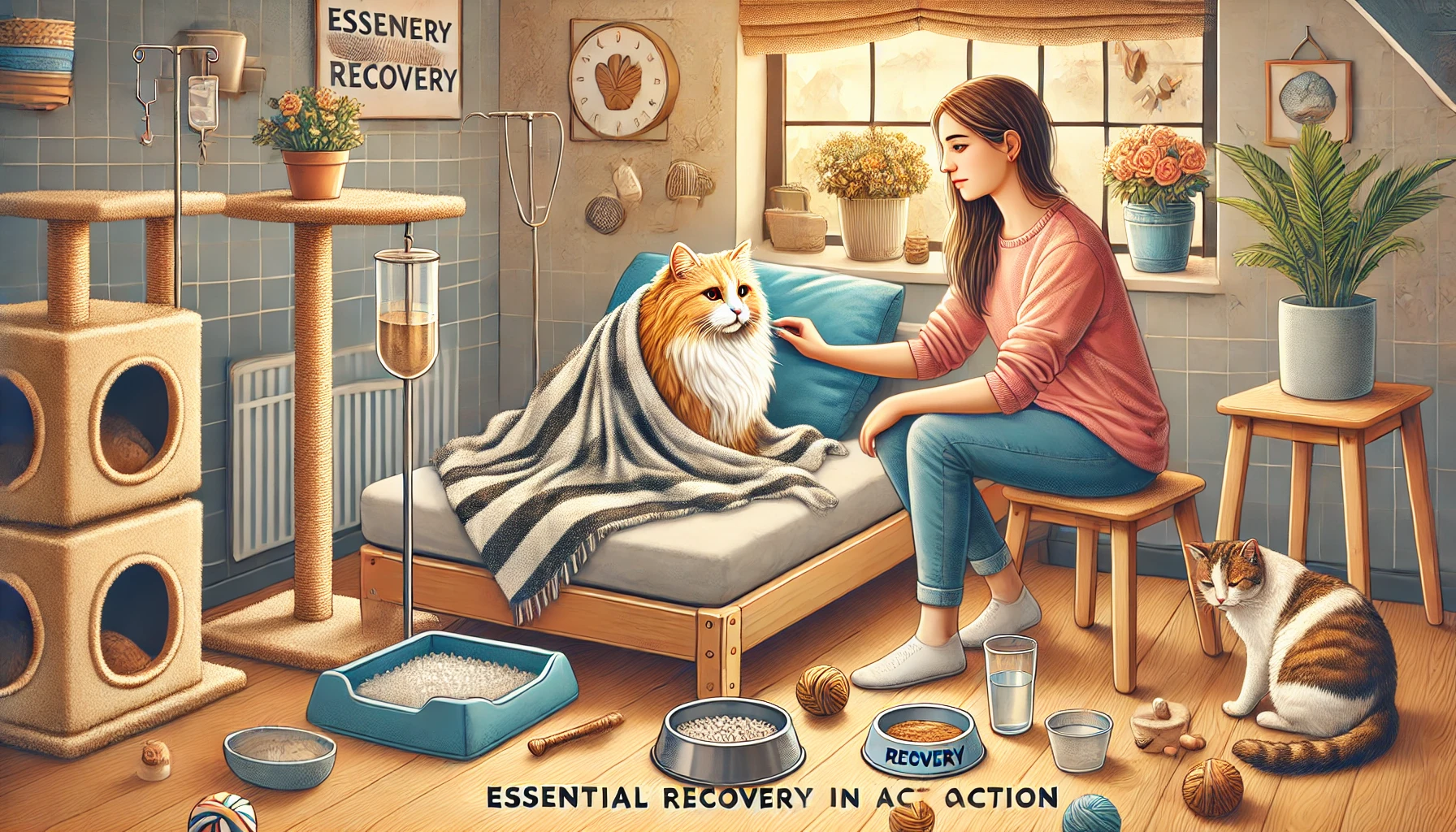
Recovery Tips
To help your cat recover smoothly after spaying or neutering, follow these tips:
- Limit activity: Cats are naturally active, but after surgery, you should restrict their movement for at least a week. Jumping and running can strain the incision site and delay proper healing.
- Use an e-collar: Put an Elizabethan collar (e-collar) on your cat to prevent them from licking or biting the incision site, which could introduce bacteria and lead to infection.
- Monitor the incision site: Check the incision daily for signs of redness, swelling, or discharge. If you notice any of these signs, contact your vet immediately.
- Keep the litter box clean: Maintain a clean litter box to avoid bacterial infection of the incision site. Using shredded paper or low-dust litter can reduce irritation.
- Provide quiet rest: Ensure your cat has a calm, comfortable environment to rest in during recovery. Minimize loud noises or disturbances to reduce stress.
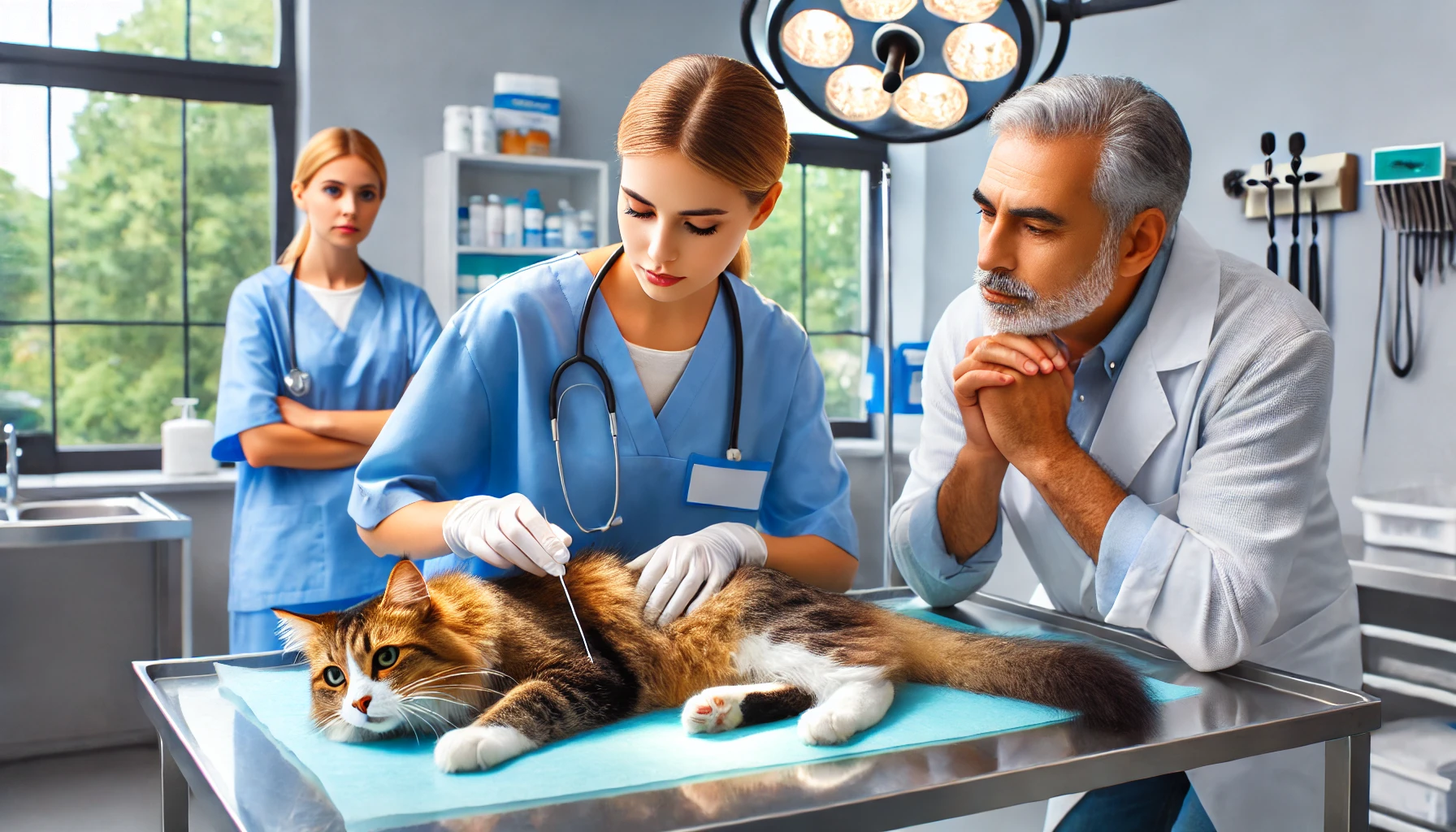
Common Post-Operative Issues and How to Handle Them
While most cats recover without issues, there are a few common post-operative concerns to watch for:
- Licking or biting the incision: If your cat tries to lick or bite the incision site, it can delay healing and increase the risk of infection. Using an e-collar will prevent this.
- Swelling or discharge from the incision: Mild swelling is normal, but if you notice excessive swelling, redness, or discharge, contact your vet as these could be signs of infection.
- Loss of appetite or refusing to drink: If your cat hasn’t resumed eating or drinking within 24 hours, contact your vet immediately. Cats can become dehydrated quickly, and this needs prompt attention.
- Excessive lethargy: While it’s normal for your cat to be less active after surgery, excessive lethargy or weakness beyond the first 48 hours could indicate a problem and should be addressed by your vet.
By providing attentive care and following your vet’s instructions, you can ensure a successful recovery after spaying or neutering, leading to a healthier and happier life for your pet.
Post-surgery care is crucial for recovery. Ensure your cat rests, avoids licking the incision site, and stays in a quiet environment.
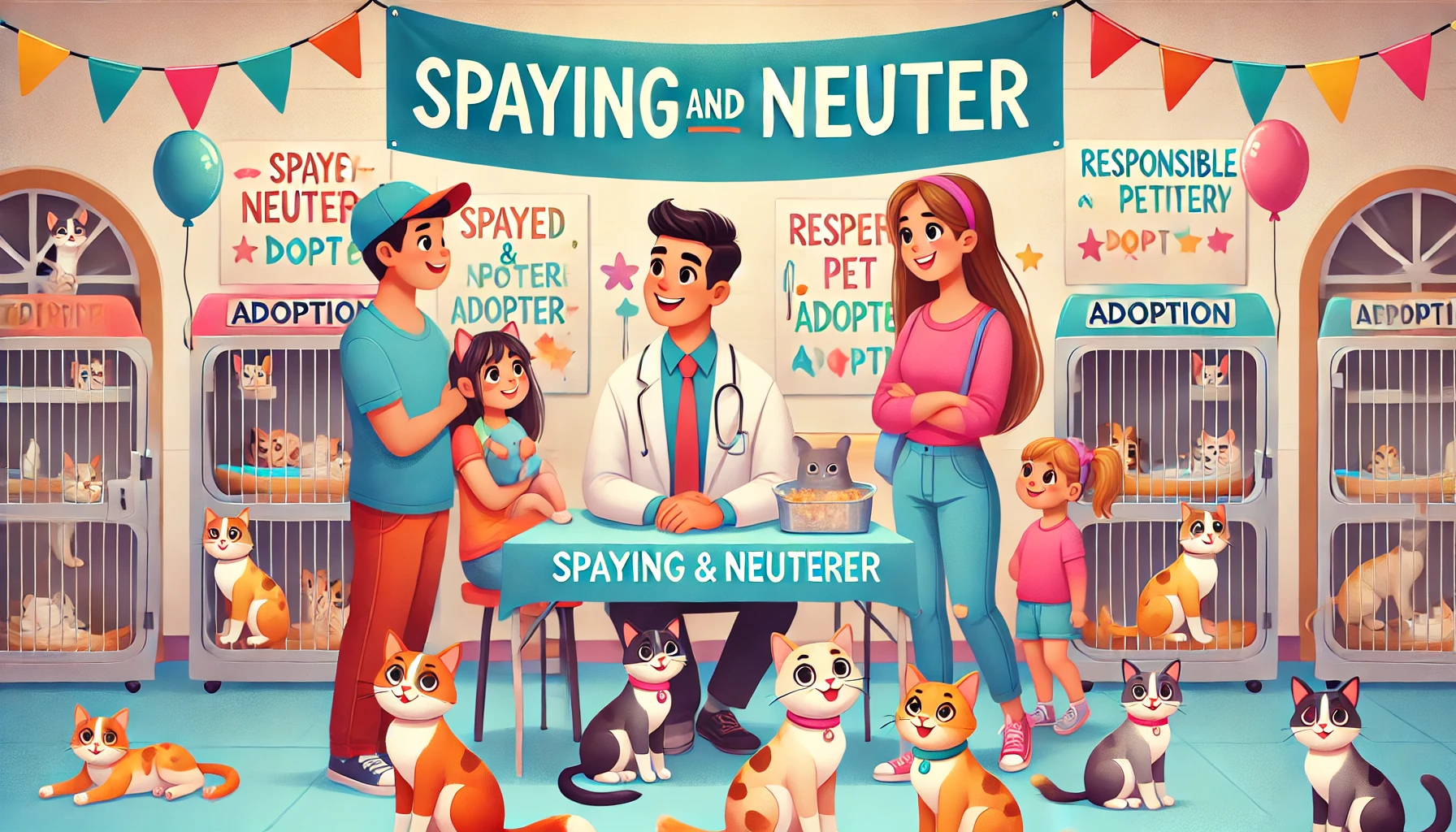
The Vital Role of Spaying and Neutering in Cat Adoption
Spaying and neutering are the cornerstone of responsible cat adoption, ensuring your pet’s health and addressing broader societal issues such as overpopulation.
By spaying or neutering your cat, you are not only protecting your cat’s health but also contributing to reducing the number of stray and abandoned cats.
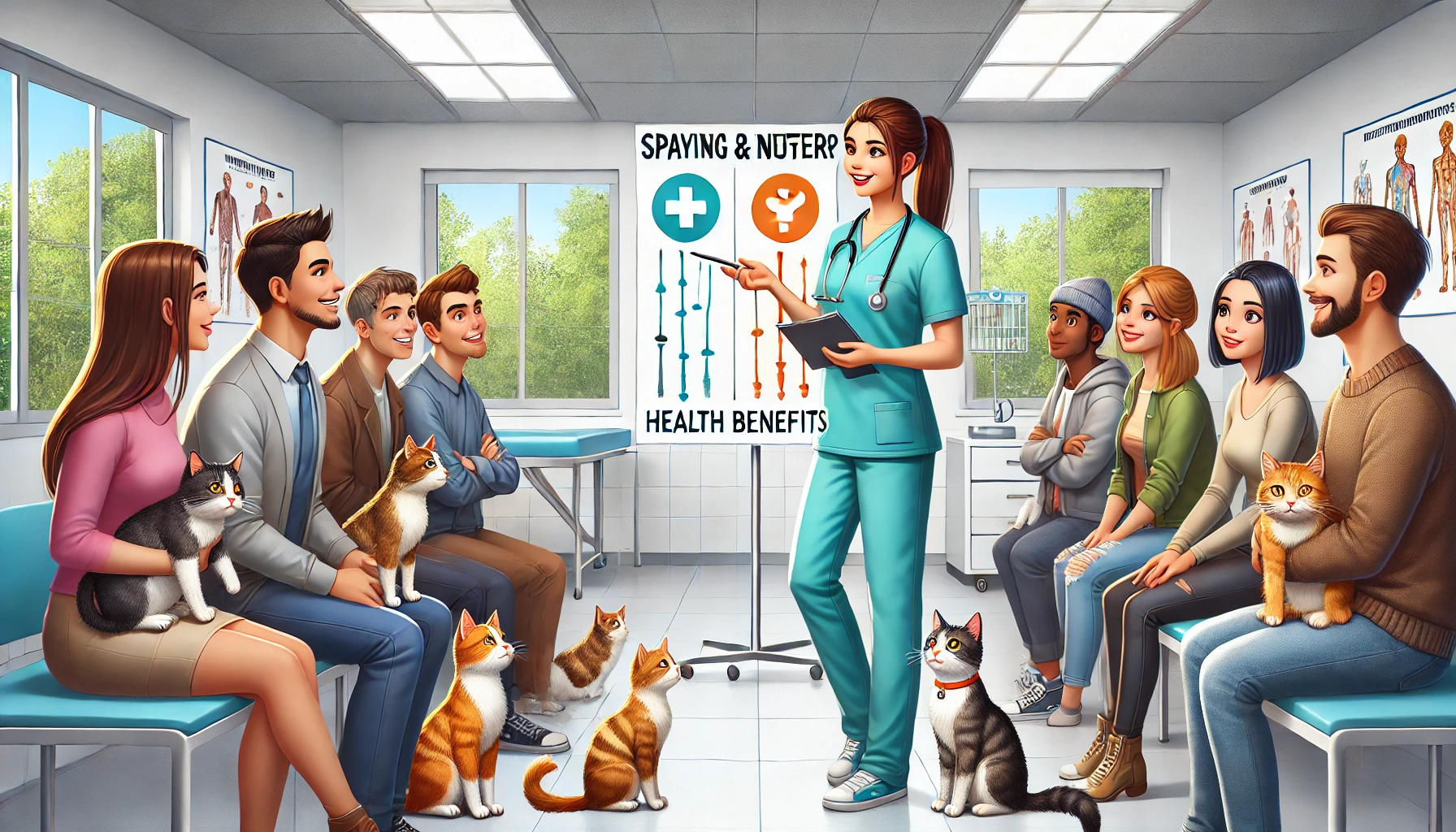
Health Benefits of Spaying and Neutering
Spaying and neutering prevent a wide range of serious health problems in both male and female cats.
In females, spaying prevents uterine infections and significantly reduces the risk of breast cancer.
Neutering males eliminates the threat of testicular cancer and reduces the chances of prostate issues.
These procedures also prevent behavioral problems caused by mating instincts, such as fighting, roaming, and marking territory, leading to a more peaceful household.
Beyond these health benefits, spaying and neutering also reduce the number of vet visits and lower healthcare costs over the course of your pet’s life.
By preventing serious health conditions, you are ensuring your cat’s long-term well-being and happiness.
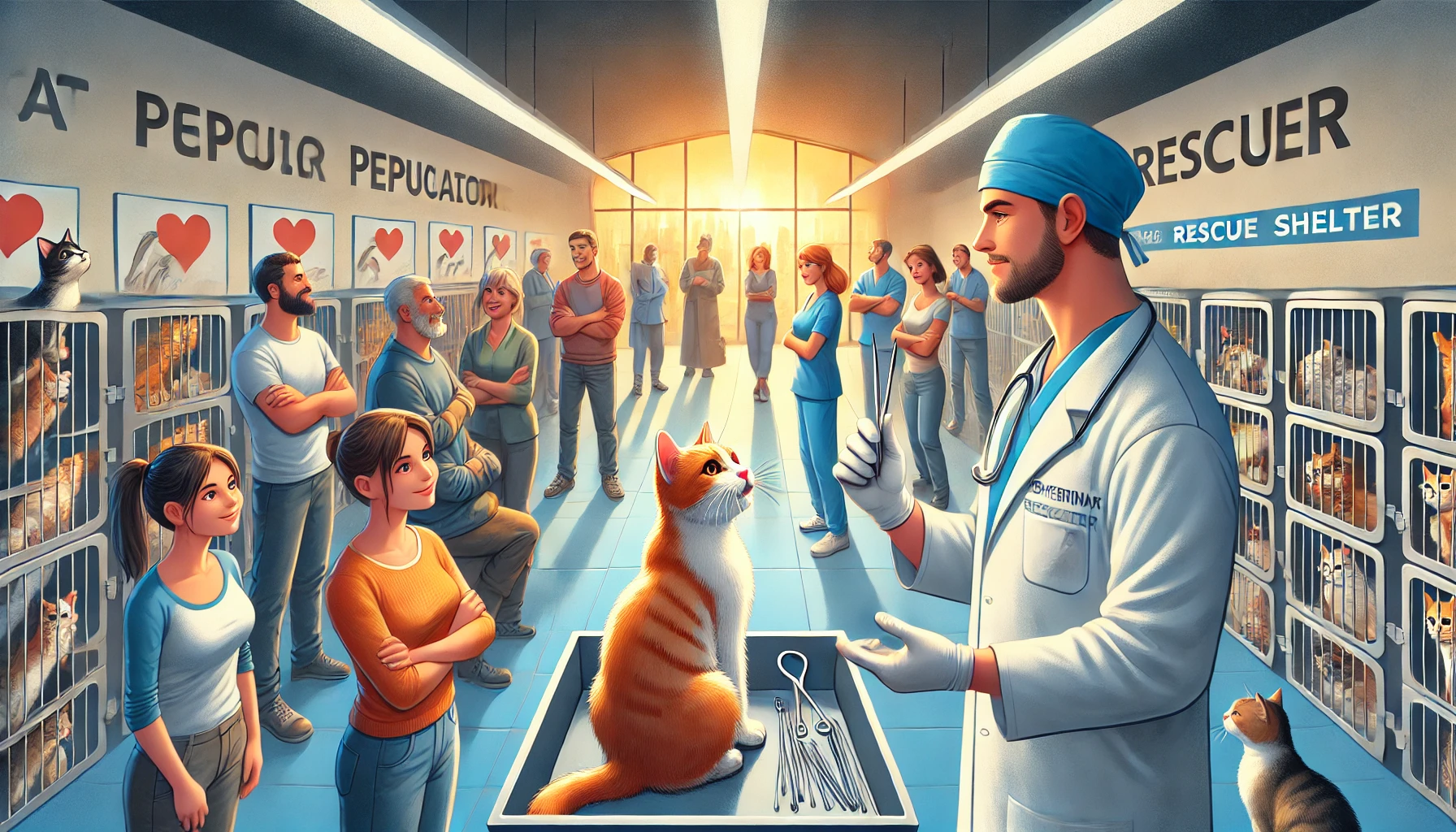
Population Control and Its Impact on Rescue Shelters
Rescue shelters face the challenge of overpopulation daily, and spaying and neutering are essential tools in combating this crisis.
Shelters routinely spay and neuter cats before they are adopted, ensuring no new litters are born and helping prevent the stray population from growing.
This allows shelters to focus their resources on rehabilitating and rehoming the cats in their care, improving adoption success rates.
When you adopt a spayed or neutered cat from a shelter, you are directly contributing to reducing the number of homeless animals.
At the same time, you are supporting animal welfare organizations in their efforts to address overpopulation.
This commitment to population control helps reduce overcrowding in shelters and lowers euthanasia rates.

Post-Surgery Care
Post-surgery care is crucial for ensuring a smooth recovery for your spayed or neutered cat.
Key precautions include keeping your cat in a quiet environment, limiting their activity, and regularly checking the incision site for any signs of infection.
With proper care, your cat will recover quickly and return to their energetic and loving self.
Minor post-operative issues such as swelling, lethargy, or loss of appetite can often be addressed with attentive care and timely intervention from a veterinarian.
By following your vet’s post-surgery instructions, you can help your cat recover comfortably and without complications.

Contributing to a Better Future for Cats
Spaying and neutering extend beyond the individual cat—they are vital steps in addressing the broader issue of cat overpopulation.
By choosing to spay or neuter your pet, you are ensuring a brighter future for all cats.
Fewer unwanted litters mean fewer cats on the streets and in shelters, leading to healthier and happier communities of animals.
Whether you are adopting a cat from a rescue shelter or giving a home to a stray, spaying and neutering are essential steps in responsible pet ownership.
These procedures improve your cat’s quality of life, support the efforts of animal welfare organizations, and make a meaningful contribution to controlling the overall cat population.
Together, we can work toward a future where every cat has a loving home and a healthy life.
Spaying and neutering are essential for responsible cat ownership, benefiting your cat’s health and helping reduce overpopulation.
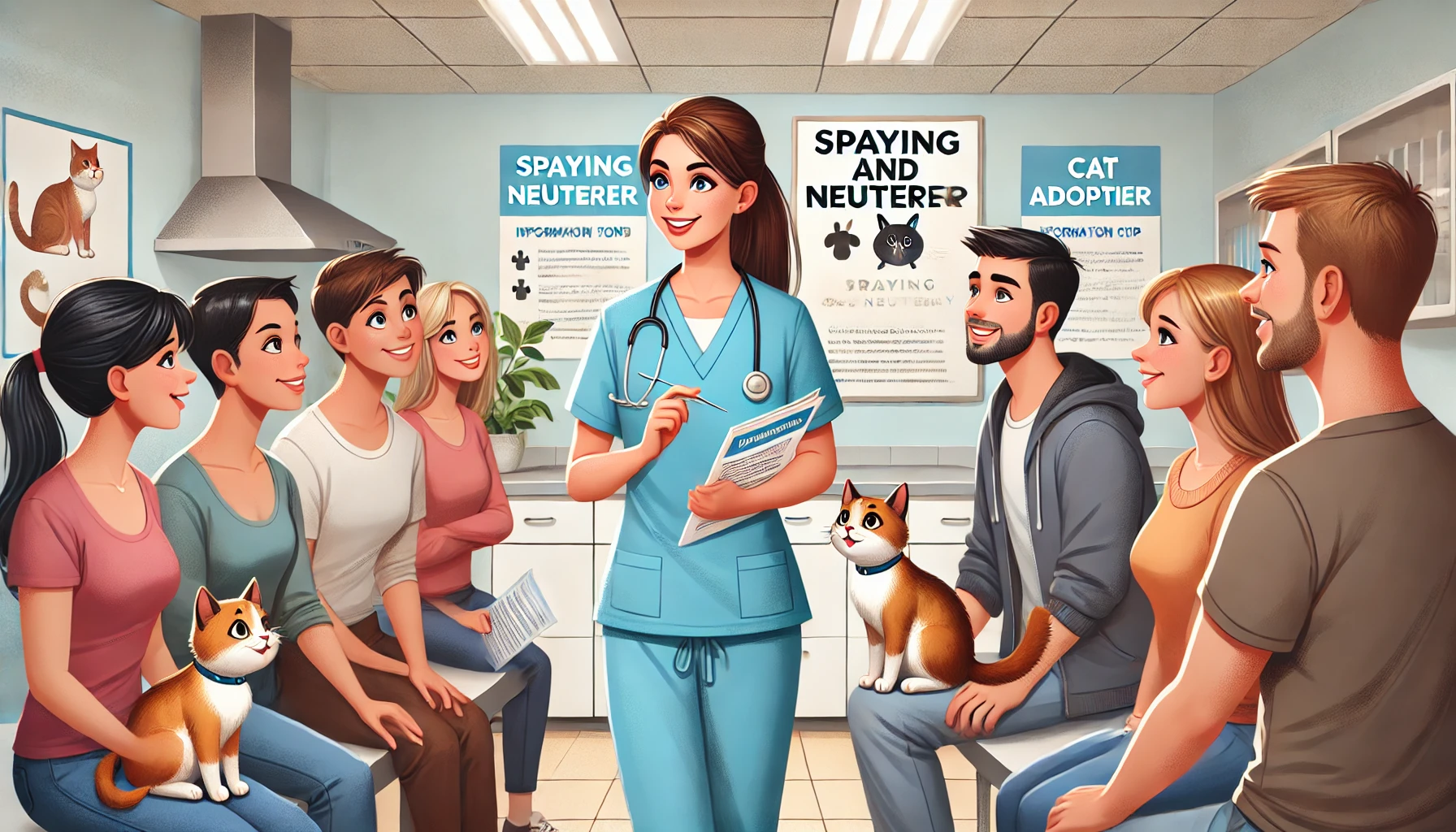
FAQs About Spaying and Neutering in Cat Adoption
Spaying and neutering are crucial steps in responsible cat ownership.
Below are some frequently asked questions and answers about these procedures, focusing on their benefits and how they help your cat’s well-being, as well as the community at large.
How old should a cat be spayed or neutered?
Most veterinarians recommend spaying or neutering when the cat is between 4 to 6 months old.
In some cases, this can be done as early as 8 weeks, depending on the cat’s health and size.
Why is spaying or neutering important for adopted cats?
Spaying and neutering are vital for controlling the population of stray cats.
These procedures also offer significant health advantages by preventing cancers and infections, while improving your cat’s behavior by eliminating mating-related instincts.
How long does a cat take to recover from spaying or neutering?
Most cats recover within 7 to 10 days after being spayed or neutered.
During this time, it’s important to monitor their activities, prevent them from licking the incision site, and keep them in a quiet environment.
What behavioral changes can a cat display after neutering?
Neutered cats are less likely to roam, fight, or mark territory with urine.
Spaying or neutering also reduces aggressive behavior and eliminates the possibility of your cat going into heat or searching for a mate.
Does weight gain occur in spayed or neutered cats?
Spaying or neutering may reduce your cat’s metabolic rate, potentially leading to weight gain.
However, this can be managed with proper nutrition and regular exercise to ensure your cat maintains a healthy weight.
How does spaying or neutering affect a cat's health?
Spaying and neutering reduce the risk of cancers and infections, particularly in reproductive organs.
Over time, this leads to fewer vet visits related to health issues caused by mating and reproduction.
Is early-age spaying or neutering safe for cats?
Yes, early spaying or neutering, also known as pediatric spay/neuter, is safe and effective.
Many shelters perform the procedure as early as 8 weeks old to ensure cats are adopted with no risk of future litters.




